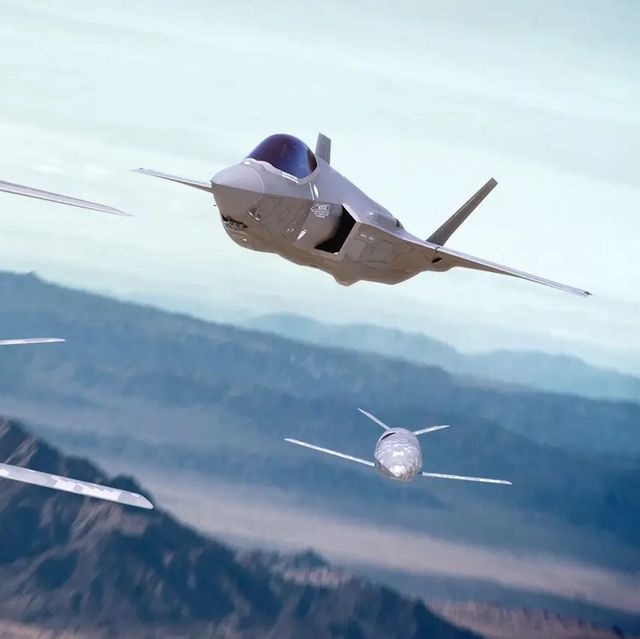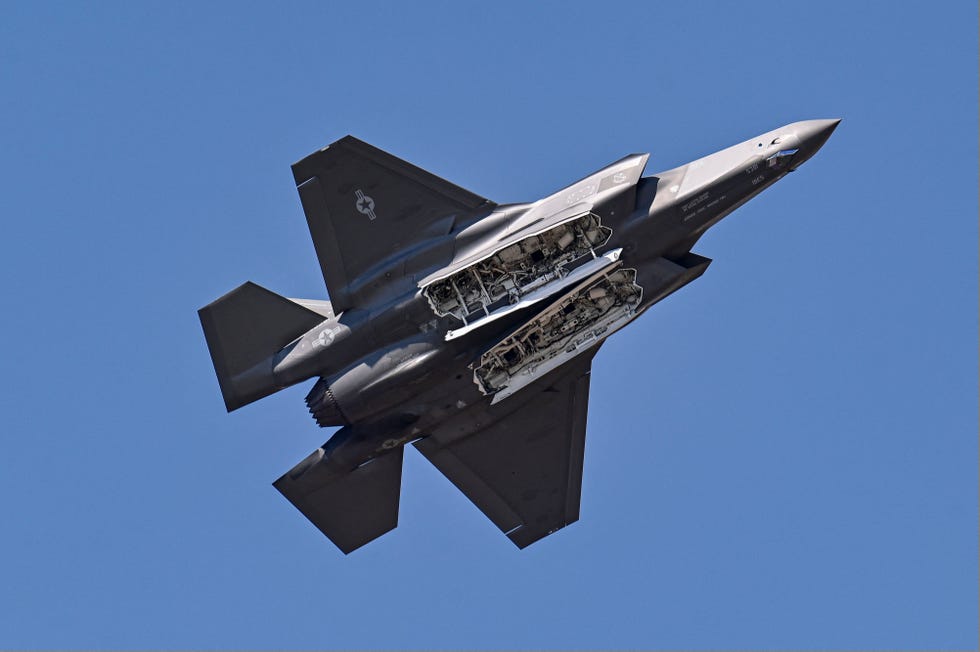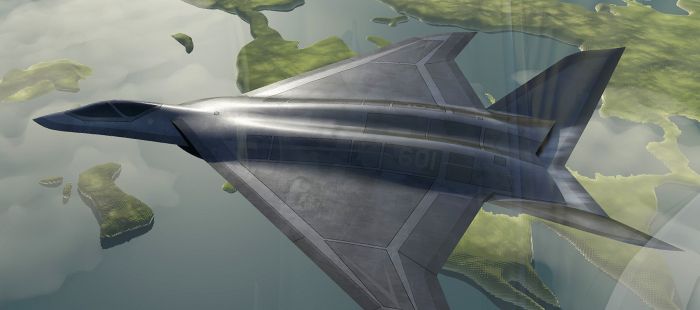- The U.S. Air Force wants at least 200 Next Generation Air Dominance (NGAD) fighter jets, according to the Secretary of the Air Force.
- Each NGAD fighter would fly alongside two advanced drones capable of keeping up with the high performance jet.
- It’s the first time the Air Force has specified how many of the new fighters it wants.
The U.S. Air Force wants a minimum of 200 Next Generation Air Dominance (NGAD) fighter jets. That’s the word from Secretary of the Air Force Frank Kendall, speaking at a service conference last week—and the first time the Air Force has stated how many of the new fighters it wants.
The NGAD program is the Air Force’s initiative for creating its sixth-generation—and yet to be unveiled—fighter jet and any accompanying systems. The new fighters will be backed up by a fleet of 1,000 drones, many of which will be assigned to fly with F-35 Lightning II fighters. The 1,200 crewed and uncrewed aircraft will constitute the absolute tip of the spear of America’s future fighter force.
1200 New Planes, But Only 200 Crewed Planes
Kendall laid out the plans at an Air Force Association conference in Aurora, Colorado. According to Air & Space Forces Magazine, Kendall described the numbers as “notional” and “somewhat arbitrary.” The numbers are also not an inventory objective but used for planning purposes. This suggests the Air Force does not want anyone watching the analysis process to think it needs just 200 NGAD fighters. The number is probably a baseline to achieve victory under certain scenarios, with additional numbers of fighters ensuring quicker U.S. air supremacy in a future conflict.
Each NGAD fighter would be accompanied into battle by two Collaborative Combat Aircraft (CCA)—uncrewed, high-performance drones capable of autonomous action. Each CCA would likely carry sensors, such as radar and infrared, allowing it to extend the range the human pilot can detect the enemy. Electronic attack, in the form of enemy radar and other sensor jamming, is another option. Other CCAs could carry additional air-to-air missiles, acting as a flying magazine that dramatically increases the number of missiles available to the human pilot. This will be especially useful as NGADs will likely carry weapons internally, a practice that reduces the aircraft’s radar signature but also reduces the number of missiles it can carry.
F-35 Lighting IIs Will Also Have Drone Wingmen
In addition to NGADs, 300 F-35 Lightning II fighters will also be assigned two CCAs each. Unlike NGADs, which will probably be a pure air-to-air fighters, the F-35 is capable of air-to-ground roles. This suggests CCAs will also have air-to-ground capabilities, though it’s possible this force of 300 F-35s will mainly fly air superiority missions in support of NGAD fighters.
The relatively small number of F-35s that will be assigned CCA drones is a bit of a head scratcher. The Air Force started buying F-35s in 2007 and plans to procure 1,763 F-35s through 2034. It is possible that the 300 F-35s will be later production models modified to control drones, since no hardware or software is currently installed on the F-35 series to do so. F-35s with a new adaptive-cycle engine would benefit from increased operational range, allowing the jet to fight over greater distances, particularly over Asia and the Pacific.
The Takeaway
The U.S. Air Force seems to be recognizing that China is gaining in terms of technology, and likely has an edge in aircraft production. The service is looking towards quality over quantity, a durable quality that will keep fighters like NGAD and F-35 ahead of China, Russia, and other potential adversaries viable for decades to come. This will come at a substantial cost—the Air Force has already warned NGAD’s individual price will be in the hundreds of millions of dollars. The Air Force has built the jet and is building a case for it—the next step is selling it to the American people.

Kyle Mizokami is a writer on defense and security issues and has been at Popular Mechanics since 2015. If it involves explosions or projectiles, he's generally in favor of it. Kyle’s articles have appeared at The Daily Beast, U.S. Naval Institute News, The Diplomat, Foreign Policy, Combat Aircraft Monthly, VICE News, and others. He lives in San Francisco.















